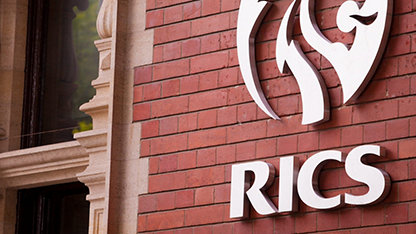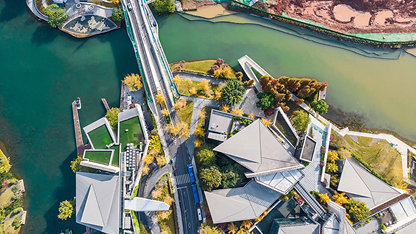Employers, project managers and construction firms across the supply chain are facing unprecedented challenges as the UK government continues to confirm that construction sites in the UK can remain open during the COVID-19 pandemic. Despite UK government guidance, there are many projects throughout the UK which have concluded that works cannot continue on site, resulting in a large number of site closures. Accordingly, difficult decisions are being made about whether to temporarily close sites in response to the pandemic and, where sites remain open, how best to protect the workforce while mitigating delay to progress.
Where possible, in such unprecedented times, the parties to construction contracts and their professional consultant teams may need to be pragmatic in order to find short-term solutions to safeguard the viability of the relevant construction project, including measures to best retain resources, materials and general capabilities during and after the pandemic period.
Although contract matters and compliance with statutory health and safety duties are obviously key, parties should bear in mind the need to maintain long-term relationships and potential reputational issues, but without compromising contractual positions. Parties should be particularly wary of waiving any rights or promising to deliver when they may not be able to do so. If necessary, the position on compliance with statutory health and safety duties should be made clear to persuade employers and the supply chain to agree reasonable changes to the construction contract.
“Although contract matters and compliance with statutory health and safety duties are obviously key, parties should bear in mind the need to maintain long-term relationships and potential reputational issues, but without compromising contractual positions. ”
Understanding how the contract allocates risk for the events and circumstances that may arise from the COVID-19 pandemic and what relief may be available will be an important first step. This may include Force Majeure, delay to progress, unavailability of personnel or materials, or the mandatory closure of the site. Where areas are unclear, these may need to be resolved between the parties.
Regardless of the form of contract, some practical points that it will be important to consider include:
- How do obligations track through the supply chain? Undertake an audit of all contracts across a project to understand how the risks and obligations are managed through the supply chain. Identify your key sub-contractors on a project and communicate with them early on to understand their COVID-19 related contingency plans and exposure. This will help you inform decisions as well as discussions to be had up the line with the employer.
- What works cannot continue? Establish what works cannot continue on site, whether as a result of the unavailability of staff, materials or equipment or as a result of being unable to undertake the works while meeting public health guidelines around social distancing. Clear communication, including giving appropriate notices when required, will be important in detailing the cause and effect of the COVID-19 pandemic on specific activities.
- What works can continue? Equally important will be a review of what works can continue, either on site, or remotely, either to mitigate overall delay to the project, or to plan and prepare for the delivery of the works in the future. This may provide an opportunity for parties to progress or develop the design for the works, evaluate future procurement streams and collaborate with their supply chain to plan for the delivery of ongoing works.
- What notices are required and how should they be effectively issued? The contract will typically set out details of how notices – and other communications – are to be served. Careful compliance with these provisions will ensure effective service of any notice linked to the management of the COVID-19 pandemic, particularly where service of a notice is considered a condition precedent. Where service of a notice is not possible, for example, where hand delivery cannot be achieved due to social distancing restrictions, parties are encouraged to discuss and agree in writing an alternative, potentially temporary, means of effecting service of notices.
- Obligations to mitigate any delay or additional costs incurred? Parties are likely to have obligations to mitigate the impact of COVID-19, including mitigating delay or any additional cost incurred under the contract. Some contracts are more onerous than others in this regard. Proactive engagement between parties to agree a response to the COVID-19 pandemic is advised, including decisions as to resequencing and getting materials on site as soon as possible.
A decision to close a site in response to the COVID-19 pandemic should consider:
- How to safely close the site. Careful planning and risk assessment is advised when closing a site temporarily. Works may need to be progressed to a certain stage to allow them to be safely stopped or sufficiently protected and a full site walk-through is advisable so that parties are clear about the status of the works at the point of closure.
- How to secure the site. Removal or safe storage of temporary works, materials and equipment is advisable, and parties should seek to agree an inventory list of any items left on site and where they are secured. Any site security retained to protect the site should follow public health guidelines around social distancing, and emergency procedures should be implemented to allow for access to be granted during any shutdown for inspections or any urgent remedial works.
- Do you have adequate insurance coverage? Review your insurance policies and speak to your broker to check whether your policies cover the issues you may face, including around the security of the site or any prolonged site vacancy.
“Regardless of whether a site remains open or is temporarily closed there is much that parties can do to minimise the impact of the COVID-19 pandemic on a project. ”
Regardless of whether a site remains open or is temporarily closed there is much that parties can do to minimise the impact of the COVID-19 pandemic on a project. Some practical points to consider from the outset include:
- How had the works progressed prior to COVID-19? Any future delay analysis seeking to identify the impact of COVID-19 will need to account for the progress of the works beforehand. This will include undertaking an analysis of current progress against programme, and taking account of such progress to date in any revised programme and progress reports.
- Be clear, be consistent. Communications regarding any decision in light of the COVID-19 pandemic should explain clearly what is being implemented, and why, with specific reference to the contract and UK government guidance where applicable. For example, the closure of site may be a result of an employer or project manager instruction or a notice by the main contractor. Such communications should fully explain the factual rationale, the constraints leading to the closure, any health and safety (CDM) issues and include a summary of the contractual ramifications – issuing an extension of time, for example.
- Keep records. Collate evidence and ensure detailed records are kept and maintained on the measures being implemented on site, by who, and the impact of these. Ensure that the records reflect which specific activities on the construction site are hindered on each day due to COVID-19 measures.
- Collaboration may be key to avoiding disputes down the line. Consider whether agreeing a joint way forward to manage risk or amend the existing contract can be achieved to ensure that the project can be completed while also mitigating the scope for dispute.
If site closure is deemed the most appropriate action, there are a number of steps that should be taken to ensure this is done properly, as show in the below box.
- John Mullee is partner at Pinsent Masons john.mullee@pinsentmasons.com
Practical considerations for site closure
- Ensure a controlled and safe shutdown of sites and facilities where work must be suspended due to COVID-19.
- Owners of sites have a legal duty of care to any visitors to sites, even in the event of trespass. As such, owners have an obligation to minimise safety risks on sites even during shutdowns by making efforts to prevent access to the suspended site, and mitigation of any potential hazards.
- Undertake a precise and accurate record of where site progress is up to at the point of suspension and support this where possible with photographic records. Refer to the Construction Leadership Council checklist, created on 30 March 2020, which includes questions such as:
- Has a site suspension plan been prepared?
- Has a pre-suspension site walk been organised?
- Have you updated Emergency Access Plans and notified local services?
- Where equipment and materials need to be left, store such materials in order that the materials will not be damaged, or deteriorate, over the period of the site closure.
- Remember design services may well be capable of carrying on despite the site closure. In such circumstances, if possible, ensure such design activities continue, thereby allowing a more efficient recommencement of construction site activities.
- Where agreed, put in place procedures and resources for the payment application process to operate during the shutdown period, thereby enabling payments to be made during this time.
- Review the requirement for any future deliveries and consider cancelling orders or postponing such orders to an alternative date in the future, limiting cost exposure and aligning with new programme realities.
- Review all off-site manufacturing, both in and outside of the UK, in terms of whether such off-site manufacturing is capable of being progressed during the shutdown period and also the delivery ‘need dates’ for such manufacturing, reflecting the change in programme due to the site closure.
- Consider the insurance position.











